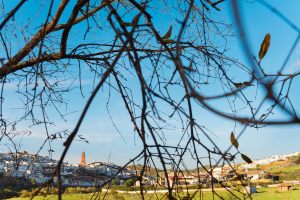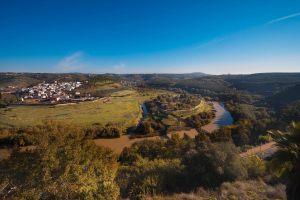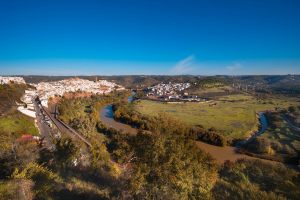Montoro not only has an excellent monumental heritage but also a natural richness due to the hydrological course of the Guadalquivir river. See this spectacle of nature from any point of the town.
Montoro Meander
You must have seen some photographs of the panoramic view that Montoro and the course of the Guadalquivir river describe as it passes through. It represents one of the most striking examples of meanders in the entire Peninsula.
The river in its middle section embraces the hill that is drawn under the town, surrounding and drawing it on its waters, and this results in the Natural Monument of Montoro Meander. It is the southern entrance to the Sierra de Cardeña and Montoro Natural Park.
Relevant data
This natural monument is almost 5 kilometres long of the length of the Guadalquivir river and it covers an area of 100 hectares. This will catch your attention: it is a meander that forms a curve that get trapped in and it has materials which are 290 and 540 million years old, due to an excavation of the river course by headwater effect.
You can’t miss: The water mills
We recommend you to look carefully at the meander and see the small elements which are on the banks of the river, and even within it. Some of these elements are considered as an ethnographic property which is inscribed in the Historical Heritage Catalogue. The water mills are a mark of a small and handmade industry nowadays which dates back centuries and they were used as a source of energy by the river.
The conditions of the land have physically favoured that waters flow with more energy in the side parts. This would explain why several water mills were risen in the river as it passes through Montoro, such as some water wheels.
What are the water mills?
If this term does not sound familiar to you, we keep you up to date: they are mills that had the function of grinding cereals, especially wheat. There were also other types that worked as reservoirs, whose main function was to alter the course of water to the river shores; the flour mills were located there to carry their strength across the wheels that were the responsible for grinding the grain.
There has not been found documents yet in order to ensure that the water mills are from the Muslim period, but we can state that they already existed before the 15th century, such as the water mill located under the Puente Mayor known as the Parada de los Castillos or Aceñuelas.









